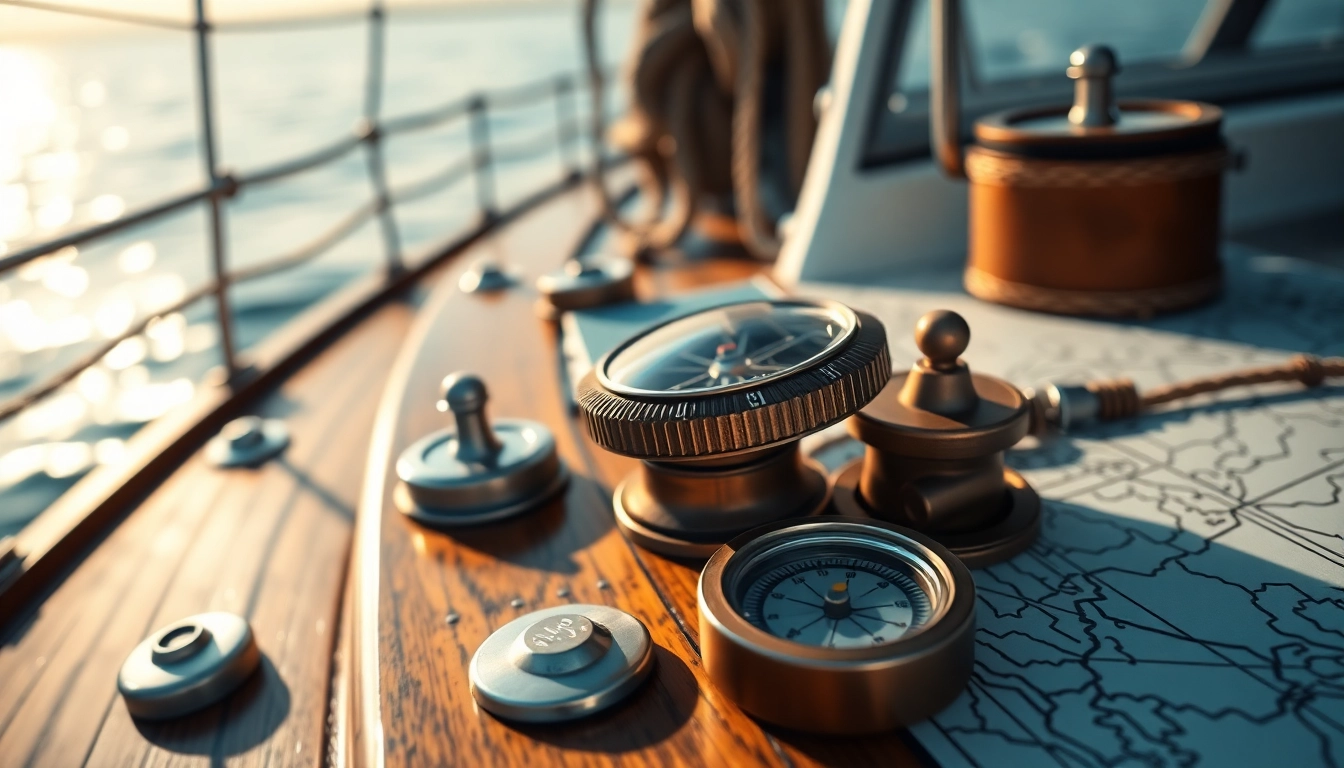Introduction to Marine Navigation and the Role of Accurate Viking Sealing
Navigation at sea has historically been a combination of art and science, relying on precise techniques to determine a vessel’s position and course. Among these methods, Boots Versegelung — or vessel sealing — plays an integral role in ensuring accurate and safe navigation, especially when modern electronic systems are unavailable or compromised. Whether you’re a seasoned sailor or embarking on a new maritime adventure, understanding the fundamentals of terrestrial navigation and how to optimize your vessel’s sealing and protective measures is crucial.
What is Boots Versegelung? and Why It Matters
Defining Boots Versegelung
Boots Versegelung refers to the process of establishing and maintaining a sealed, protected environment of the vessel’s hull and deck to prevent water ingress and ensure structural integrity. This concept extends beyond mere waterproofing and encompasses proper sealing techniques that contribute to the vessel’s overall navigational accuracy. A well-sealed boat minimizes the risk of water-related malfunctions, which could otherwise impair navigation instruments and compromise safety.
The Significance for Sailors and Navigators
In maritime navigation, especially when relying on terrestrial methods like visual bearings or celestial navigation, the accuracy of positional data can be heavily affected by environmental factors. Water seepage, humidity, and structural weaknesses can introduce errors or cause instruments to fail. Effective boots versegelung ensures the vessel remains stable and the equipment functions optimally, facilitating precise navigation. This is particularly vital for long-distance voyages, in remote areas, or during challenging weather conditions.
Fundamentals of Terrestrial Navigation and Its Practical Application
Understanding Terrestrial Navigation
Terrestrial navigation involves determining a vessel’s position and course relative to fixed objects or landmarks on land. It relies heavily on visual cues, compass bearings, and calculated angles to plot an accurate course. Techniques like bearing measurements, triangulation, and the use of detailed nautical charts form the core of terrestrial navigation. Mastery over these methods is essential when electronic navigation tools fail or are unavailable, making traditional skills an indispensable part of a navigator’s toolkit.
Applying Terrestrial Navigation: Examples and Techniques
For example, a navigator might identify a lighthouse or a prominent mountain peak and measure its angle relative to the boat’s heading using a sextant or a bearing compass. By plotting this bearing on a nautical chart and combining multiple observations, the exact position of the vessel can be triangulated. Properly sealed and maintained equipment ensures the accuracy of these measurements, reducing errors and increasing safety.
Preparing for Seamless Boots Versegelung: Tools and Equipment
Navigation Instruments and Their Selection
Choosing the right instruments is crucial for effective terrestrial navigation. Key tools include bearing compasses, sextants, GPS (as a supplementary aid), and nautical charts. Ensuring these devices are correctly calibrated and protected from water and environmental damage is part of effective boots versegelung. Waterproof cases, seals, and high-quality lubricants can extend the lifespan and performance of delicate instruments.
Essential Charts and Peilwerkzeuge (Bearing Tools)
Accurate charts, preferably laminated or stored in waterproof cases, are fundamental for plotting bearings and course adjustments. Peilwerkzeuge such as protractors, dividers, and angle measuring tools allow precise plotting of bearings onto charts, which is essential when determining your vessel’s position relative to landmarks.
Handling Peilmethoden und Winkelmessung
Proper handling of peilmethoden involves steady measurement, correct alignment of instruments, and accounting for environmental influences like wind and wave motion. Regular calibration and maintenance of equipment, along with effective sealing to prevent moisture ingress, ensure accuracy and reliability during navigation.
Step-by-Step Guide: Precision in Boots Versegelung
Determining Your Position Through Reference Objects
The first step involves identifying known, fixed objects such as navigation buoys, lighthouses, or distinctive landforms. Using a bearing compass or sextant, you measure the angle from your boat to these reference points. Precise sealing of these instruments ensures reliable measurements, even in adverse weather conditions.
Drawing Standlinien and Calculating Courses
Once bearings are taken, you draw standlinien (line of bearing) on your nautical chart. The intersection of these lines indicates your approximate position. Calculations involve translating angular measurements into real-world coordinates, where properly maintained and sealed instruments provide the accuracy necessary for reliable plotting.
Minimizing Errors for Higher Precision
Common sources of error include instrument miscalibration, environmental interference, and human mistake. Regular calibration, protective sealing, and repeated measurements help reduce these errors. Additionally, cross-checking multiple bearings and employing redundancy ensures higher confidence in the derived position.
Practical Navigation Tips for the Modern Navigator
Interpreting Bearings and Making Course Adjustments
Understanding how to read bearings accurately and translating this data into course corrections is vital. For instance, if a bearing to a lighthouse indicates deviation from your planned course, you can adjust accordingly. Ensuring your instruments are sealed prevents fogging and corrosion, maintaining their accuracy over time.
Blending Traditional and Modern Techniques
While terrestrial navigation is rooted in traditional skills, integrating GPS, AIS, and other electronic aids can boost safety and efficiency. However, relying solely on electronic systems without proper sealing and maintenance risks, underscores the importance of robust manual techniques protected by effective boots versegelung.
Making Situational Adjustments
Environmental factors such as fog, rain, or turbulence necessitate adaptive strategies. Strong seals on all navigational tools protect delicate components, ensuring the accuracy of bearings during challenging conditions. Additionally, understanding when to switch from electronic to manual navigation can be life-saving.
Addressing Common Challenges in Boots Versegelung
Weather Conditions and Their Impact
Adverse weather can cause instruments to fog, wet, or malfunction. High-quality seals and water-resistant housings mitigate these issues, enabling consistent readings. Regular inspection and maintenance are vital to keep seals intact and instruments dry.
Tool Malfunctions and Calibration Issues
Over time, precision instruments may drift out of calibration. Routine calibration, combined with effective sealing to prevent moisture contamination, extends their accuracy. Having backup tools and redundant measurement methods further ensures navigation reliability.
Diagnosing and Fixing Errors in Boots Versegelung
Identifying inaccuracies involves cross-checking bearings, revisiting measurement procedures, and inspecting seals and calibration. Detecting and correcting leaks or misalignments helps in restoring optimal performance, ensuring safe and accurate navigation.







